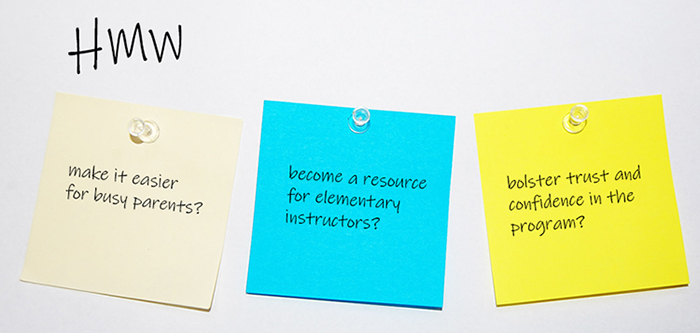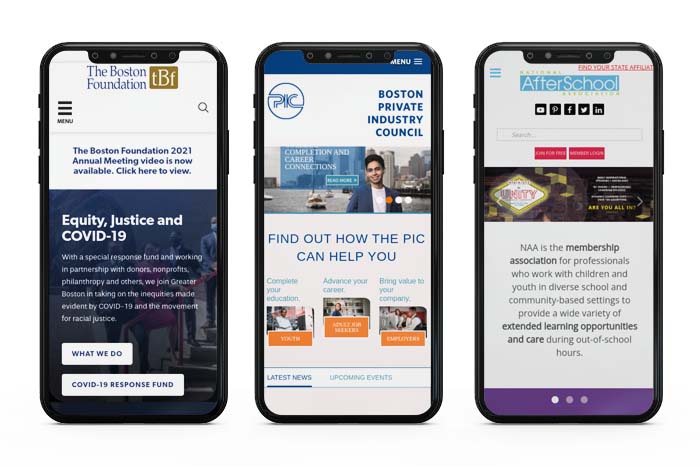Kids in Tech
Research and website redesign
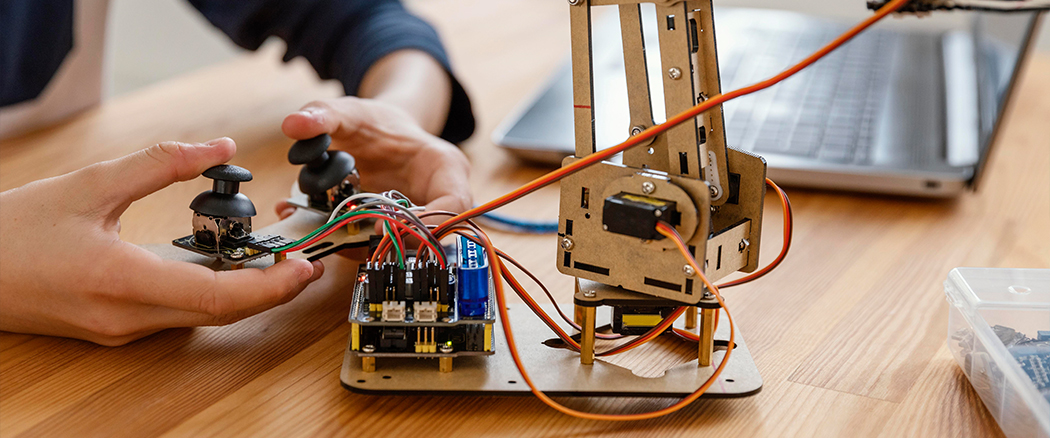
PROBLEM
An educational afterschool program foundation sought more engagement via website traffic and conversions. The website was cluttered and sent confusing calls-to-action. I was tasked with a complete website redesign to address information architecture and visual design.
As I spoke to the organization's founder and reviewed their current website, I wondered:
- What are the website’s major pain points?
- What are US parents’, teachers’, and business sponsors’ perspectives on choosing afterschool technology programs?
- If they are seeking afterschool activities, what types are they looking for?
I increased the scope of the project because I was not the user. There were many unanswered questions about who the target audience was, what they needed, and what they wanted. Answering these questions would help us to align the website content with users’ goals, motivations and concerns, and solve its main pain points.
RESEARCH METHODS
- I conducted remote interviews with the Kids in Tech founder & CEO to understand business goals and target audience. I also recruited participants via Respondent.io and conducted in-person and phone interviews with the following groups:
- Parents with elementary school children needing afterschool activities
- Public elementary school teachers searching for new programs
- Potential business sponsors looking to make a difference
- Insights gained helped me understand what various groups of users would want from an afterschool program and how they might search for one.
- I performed a competitive analysis, log analysis and site audit to establish a baseline for understanding Kids in Tech’s position in the education sector, site performance, and organization.
- I conducted unmoderated remote user tests using the UserBob application with five participants to capture talk aloud feedback and usability frustrations with the current website.
- I administered a remote, online closed card sort with three participants to understand their mental models and to finalize navigational hierarchy and terminology used within the content.
INSIGHTS
I used Miro software to analyze qualitative data, isolating themes and key categories from participants' interviews.
- It was important to build trust with parents, and to alleviate their concerns.
- Teachers needed a program that was easy to implement.
- Potential sponsors needed to see specific benefits for them.
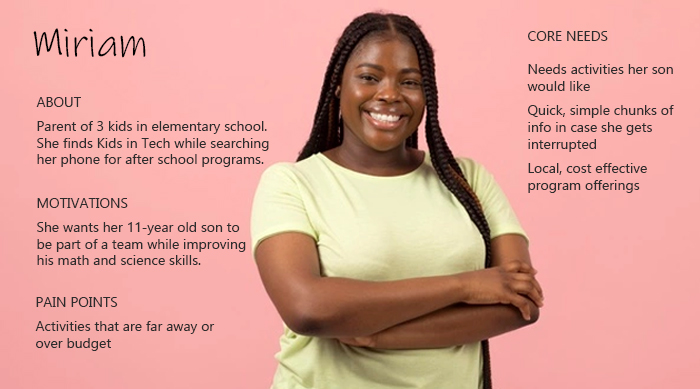
PROTOTYPING
- Showcased the organization's past work to build trust.
- Specific sponsor benefits called out to increase engagement
- User scenarios based on participants' goals informed the layout, making program implementation simple and understandable.
- Used participants' own terminology within the content and navigation to increase engagement.
- Multiple prototype iterations created based on internal feedback.
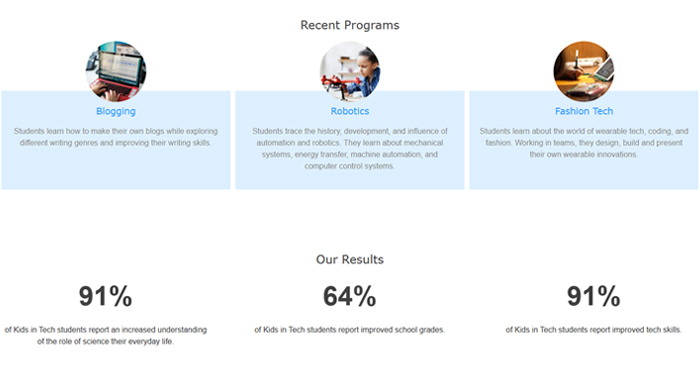
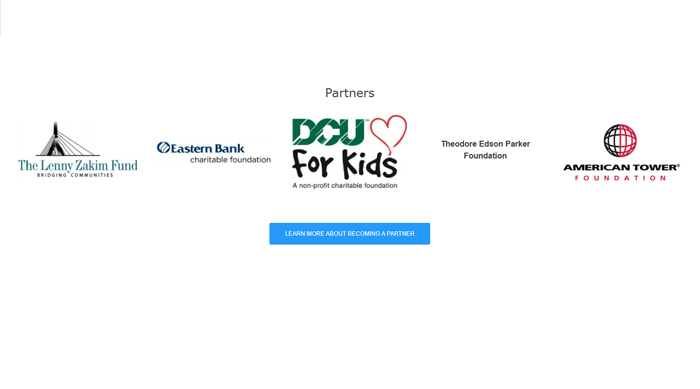
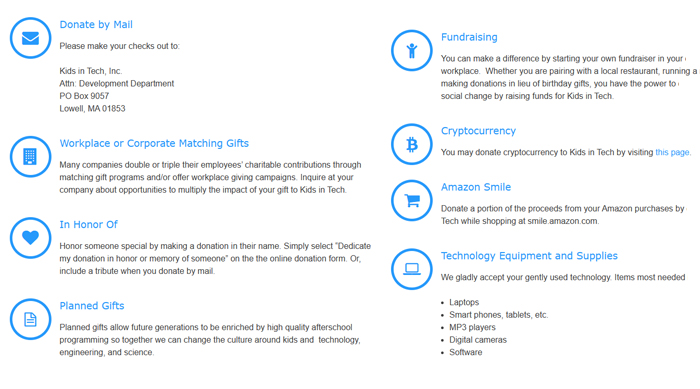

IMPACT
The redesigned website launched with clear calls-to-action leading to a 15% increase in business and organizational sponsors and increased program attendance from 15 to 60 students.
REFLECTIONS
The redesigned website is easy to navigate. There are clear calls-to-action on each page. The site's various audiences are well served with terminology they are familiar with.
With more time and a larger budget, I would have tested the prototype on target users after each iteration. But overall, the dialogue with participants was enlightening and highlighted to the organization the importance of listening to their users.
HOSPITAL APP
Formative research for hospital patient mobile app
MAP THE MONEY MAZE
Research and design for educational mobile app
BRIX
Research and design for conceptual mobile app
